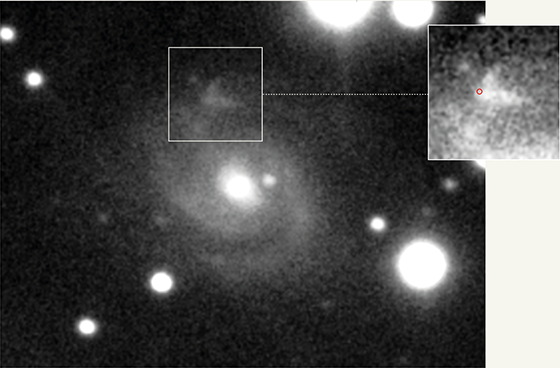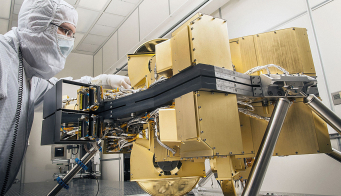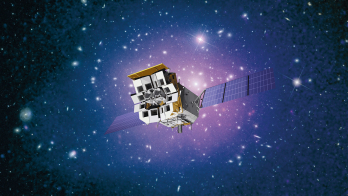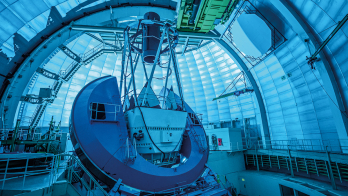
Fast radio bursts (FRBs) are a relatively new mystery within astrophysics. Around 100 of these intense few-millisecond bursts of radio waves have been spotted since the first detection in 2007, and hardly anything is known about their origin. Thanks to close collaboration between different radio facilities and lessons learned from the study of previous astrophysical mysteries such as quasars, our understanding of these phenomena is evolving rapidly. During the past year or so, several FRBs have been localised in different galaxies, strongly suggesting that they are extra-galactic. A newly published FRB measurement, however, casts doubts about their underlying origin.
As recently as one year ago, only a few tens of FRBs had been measured. One of these FRBs was of particular interest because, unlike the single-event nature of all other known FRBs, it produced several radio signals within a short time scale – earning it the nickname “the repeater”. This could imply that while all other FRBs were a result of some type of cataclysmic event, the repeater was an altogether different source which just happened to produce a similar signal. Adding to the intrigue, measurements also showed it to be in a rather peculiar high-metallicity dwarf galaxy close to the supermassive black hole within this host galaxy.
Much has happened in the field of FRBs since then, mainly thanks to data from new facilities such as ASKAP in Australia, CHIME in Canada (pictured above), and FAST in China. A number of new FRBs have been detected including nine more repeaters. Additionally, the new range of facilities has allowed for more detailed location measurements, including some for non-repeating FRBs which are more challenging due to their unpredictable occurrence. Since non-repeating bursts were found to be in more conventional galaxies than that of the repeater, a fully different origin of the two types of FRBs seemed the more likely explanation.

The latest localisation measurement of an FRB, using data from CHIME and subsequent triangulation via eight radio telescopes from the European VLBI network, throws this theory into question. Writing in Nature, the international team found that another repeater was not only the closest FRB found to date (at a distance of 500 million light years), it was found in a star-forming region of a galaxy not that different from the Milky Way and therefore very different from the other localised repeating FRB. This precise localisation measurement, which allowed astronomers to pinpoint the location within an area just seven light years across, indicates that extreme environments are not required for repeater FRBs. Additionally, some of the repeated signals from this source were not strong enough to have come from any of the non-repeating FRBs as these are all at a larger distance. The latter finding casts doubt on the idea of two distinct classes of FRBs as the non-repeaters could just simply be too far away for some of their signal to reach us.
Although these latest findings give new insights in the quickly evolving field of FRBs it is clear that more measurements are required. The new radio facilities will soon make populations studies possible. Such populations studies have previously answered many questions for the fields of gamma-ray burst and quasars which in their early stages showed large similarities with the state in which FRB studies are now. Such studies could show if one of the two vastly differing environments in the two repeaters are found is simply a peculiarity or if FRBs can be produced in a range of different environments. Additionally, studies of the burst intensities and the distances of their origin will be able to prove if repeaters and non-repeaters are only different because of their distance.








